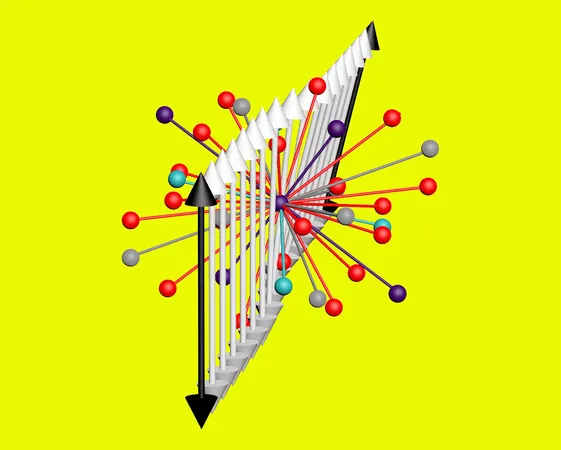
Revolutionary Discovery: Symmetrical Crystals Absorb Light in an Asymmetrical Way!
2025-06-12
Author: Wei Ling
Unexpected Twist in Crystallography
Just when we thought we’d unraveled the mysteries of crystals, a groundbreaking collaboration between Northwestern University and the University of Wisconsin-Madison has blown the doors off conventional wisdom!
For ages, scientists believed that centrosymmetric crystals—those that are symmetrical in every direction from a central point—couldn't exhibit chirality, a phenomenon where objects behave differently from their mirror images. However, this new study announces an unexpected revelation: centrosymmetric crystals can, indeed, demonstrate chiral behavior!
A Game-Changing Study
Published in the prestigious journal Science, the research team explored how a specific centrosymmetric crystal interacts with circularly polarized light, which spirals in either a clockwise or counterclockwise direction. Contrary to long-held beliefs, this crystal absorbed light unequally depending on its spinning direction, showcasing apparent chirality.
This eye-opening finding not only challenges established assumptions about crystal behavior but also paves the way for innovative technologies that can manipulate light. Possible applications include dazzling optical displays, ultra-sensitive sensors, and even revolutionary advancements in light-based communication!
A Surprising Revelation for Scientists
"This discovery astonishes many in the scientific community who thought this principle was impossible," remarks Roel Tempelaar from Northwestern University, who led the theoretical exploration. He underscores the intricate relationship between symmetry and behavior in crystals, stating, "Now, we realize that sometimes there is more than meets the eye."
Chirality: The Molecular Twist
Chirality, a fundamental concept in chemistry, describes how certain objects cannot be perfectly mirrored. For instance, a pair of shoes illustrates chirality—they are mirror images but not interchangeable. On the contrary, a sphere remains identical to its reflection, displaying achirality.
Chirality is crucial in the molecular realm, influencing everything from our food's flavors to the efficacy of medications. The story of thalidomide serves as a cautionary tale; its mirror image can lead to severe birth defects despite its effectiveness in treating morning sickness.
Unveiling the Crystal's Secret
Curious to explore chirality in crystals, Tempelaar and his team utilized their computational chemistry methods to make predictions. They posited that certain conditions could allow centrosymmetric crystals to absorb light in a chiral fashion.
Their hypothesis focused on a lithium, cobalt, and selenium oxide crystal. Contrary to established principles, they discovered it indeed absorbed clockwise and counterclockwise light differently! Tempelaar exclaimed, "To our knowledge, no centrosymmetrical crystal has been reported to do this! We're thrilled with our first discovery and eager to explore similar materials further!"
The Future of Light Control Awaits!
This groundbreaking work is just the beginning as scientists now have the chance to rethink common materials that could revolutionize how we control light. Buckle up, because the future of technology just got a whole lot brighter!


 Brasil (PT)
Brasil (PT)
 Canada (EN)
Canada (EN)
 Chile (ES)
Chile (ES)
 Česko (CS)
Česko (CS)
 대한민국 (KO)
대한민국 (KO)
 España (ES)
España (ES)
 France (FR)
France (FR)
 Hong Kong (EN)
Hong Kong (EN)
 Italia (IT)
Italia (IT)
 日本 (JA)
日本 (JA)
 Magyarország (HU)
Magyarország (HU)
 Norge (NO)
Norge (NO)
 Polska (PL)
Polska (PL)
 Schweiz (DE)
Schweiz (DE)
 Singapore (EN)
Singapore (EN)
 Sverige (SV)
Sverige (SV)
 Suomi (FI)
Suomi (FI)
 Türkiye (TR)
Türkiye (TR)
 الإمارات العربية المتحدة (AR)
الإمارات العربية المتحدة (AR)